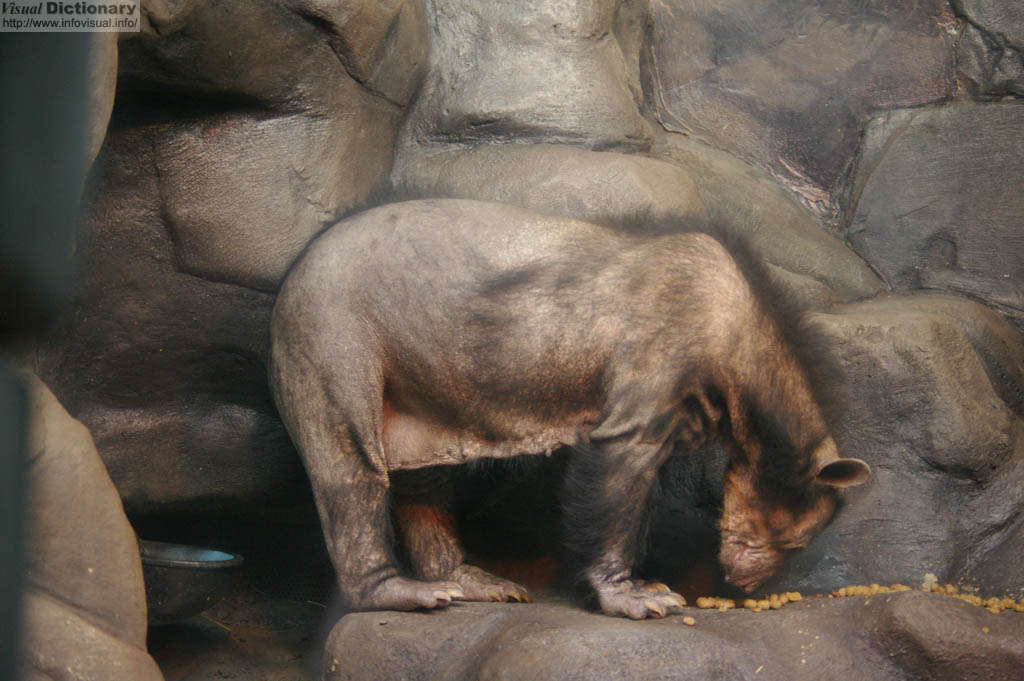Photo
Spectacled Bear

The Spectacled Bear is a relatively small species of bear native to South America. It has black fur with a distinctive beige-coloured marking across its face and upper chest. The bears make their habitat in the Andes and nearby regions, where an abundance of water and vegetation provides an adequate supplement to their very basic dietary needs of roots, leaves, shoots, berries, occasionally insects, rodents, carrion and rarely, cattle. They are diurnal, exhibit periods of rest approximating 1–2 hours midday, and do not hibernate (though they will den up in inclement weather). Being an arboreal bear, the Spectacled Bear lives mostly in dens near high canopy temperate and subtropical rainforests, or occasionally in the surrounding trees to avoid danger of predatory mammals.
Except for humans, the Puma and Jaguar are the only animals in the range of the Spectacled Bear that potentially could prey on an adult bear female, the typically far larger males are even less likely to ever fall victim to a natural predator. The young bears have an instinctive urge to climb trees, rocks, and cliffsides from birth as the inordinately protective mother teaches it to reach the highest and most nutritious foods. Spectacled Bears are most closely associated with high altitude Andean cloud forests above 2,000 m, where epiphytic bromeliads form a major part of their diet. They are more rarely found in lowland rainforest and the dry, coastal forests on the Peru-Ecuador border. The Spectacled Bear is adapted to the rainforest as it has a very keen sense of smell and a large nose for finding food in small soil crevices and in high tree canopies. It also has sharp, elongated claws for digging root systems and uprooting plants. The bear can also recognise different individual bears by their unique spectacle markings. The bear is able to plan its pregnancy and labour in order to give birth in the most plentiful food season.